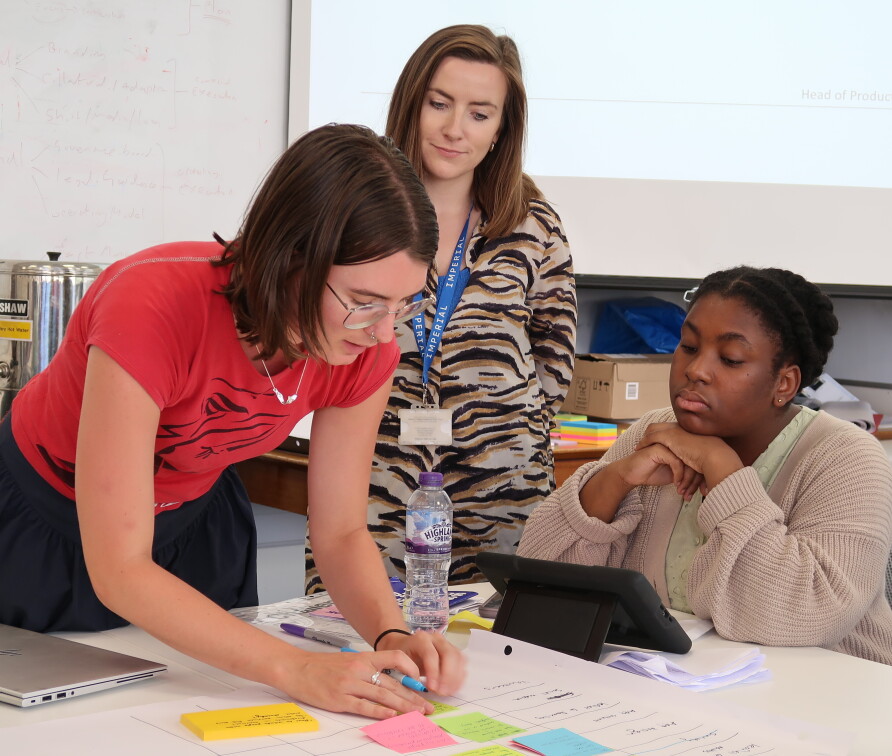What Good Looks Like
Our Helix Centre has been supporting NHSX’s What Good Looks Like programme, a framework that sets out a common vision for good digital practice, outlining seven success measures for digital transformation. Our team has been conducting discovery research and co-development sessions to inform, draft and iterate the guidance. We’ve also been helping leaders to prioritise actions for their team’s improvement.
As part of this work, we developed three support offer prototypes to help leaders prioritise actions for their team’s improvement. One prototype was prioritised and is currently undergoing development as a minimum viable product. The aim of the support offer is to make it easier for NHS executives to stay up-to-date with the latest digital reports, policies, papers and trends, with succinct content that can be consumed on the go. This includes blueprints, standards and real-life examples of best practice, offering a simple way for leaders to learn about digital health.
The ultimate goal is to ensure that NHS leaders have the right information, tools and support to digitally transform services and provide better care. Beyond the NHS, the support offer has the potential to enable digital transformation across the wider public sector.
What Good Looks Like for Nursing
Building on the What Good Looks Like (WGLL) programme that our Helix Centre is supporting, the team is also working with NHSX on their WGLL for Digitally Enabled Nursing programme. This initiative recognises the fact that nurses are critically positioned to drive digitally-enabled care transformation. Organisations that create the conditions for nurses to influence digital transformation decisions from ward to board will be better placed to have a culture of safer, more effective, efficient, and sustainable care.
Our discovery work aims to inform a co-designed framework of what good looks like for digital nursing, in addition to a self-assessment process to track progress and pinpoint support. It will also guide the development of a support offering, which aligns with the strategy to engage executive-level nurse leaders on how to make a positive impact on the areas of greatest need for the nursing workforce.
Once completed in 2022, the framework and self-assessment guide will offer recommendations for digitally-enabled nursing for executive-level nurse leaders across integrated care systems and provider organisations.
Centring new technologies around people’s needs
Working with collaborators at Sussex Our Care Connected (OCC) team and Sussex Partnership NHS Foundation Trust (SPFT), a team from our Helix Centre are using systems-thinking approaches and human-centred design to support the development of new technology solutions that are tailored to users’ needs.
This work is spread across three programmes. The first is working to support the OCC team to ensure that users - patients, front-line staff, and system stakeholders - are at the core of the digital development of a Shared Care Record, and that the resulting product supports their needs. The second project with the OCC team aims to align all partners within Sussex around a common set of standards, behaviours and new patterns of use for digital virtual consultations. This includes a holistic approach, with a particular focus on accessibility and technology-agnostic patterns of use, led by the service user and service provider needs and an assessment on how the Trust could harness existing best practices.
Working with SPFT, the third programme will identify a range of user needs that will guide the development of a seamless digital user experience for people receiving mental healthcare that is delivered by multiple mental health providers.
Across the three programmes, as well as helping organisations to deeply understand their users’ needs and tailor products and services to these, their approach brings core team members together and helps them align around a common purpose.
Our people - get in touch
Lenny Naar - Head of Design Strategy
Rachel Marsden - Service Designer
Claudia Hopkins - Interaction Designer
Gianpaolo Fusari - Senior Designer
Clarissa Gardner - Research Assistant (Digital Health)

